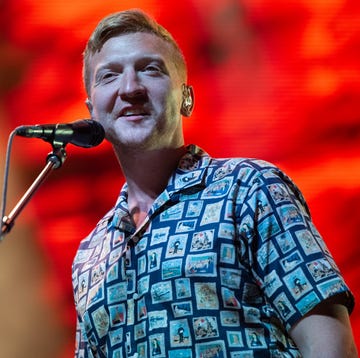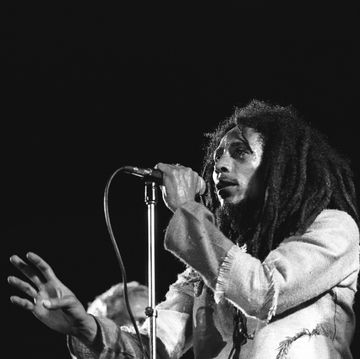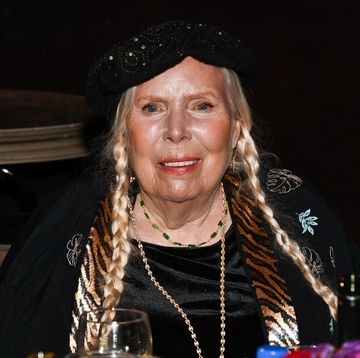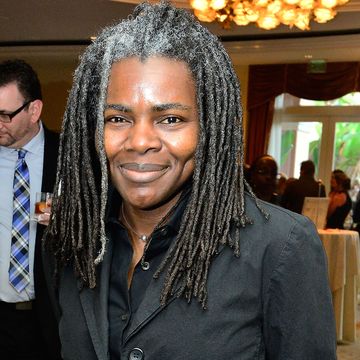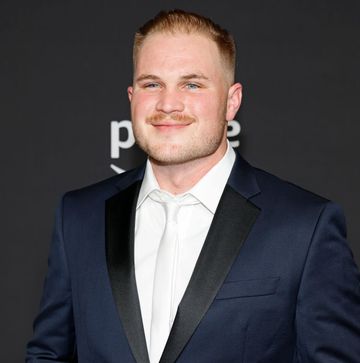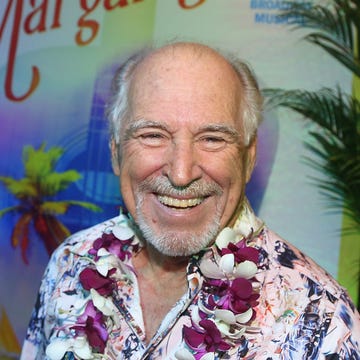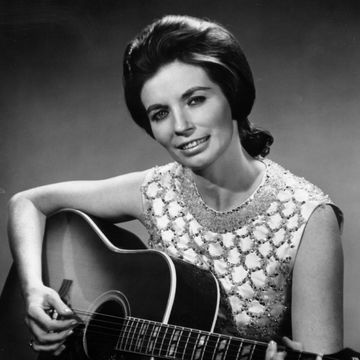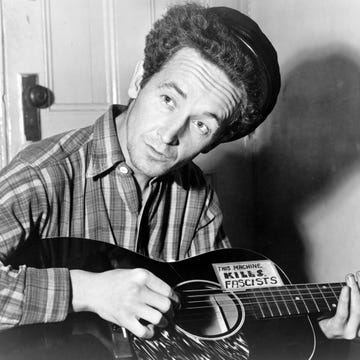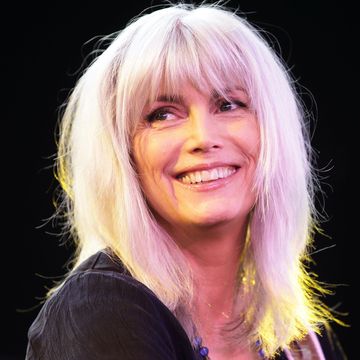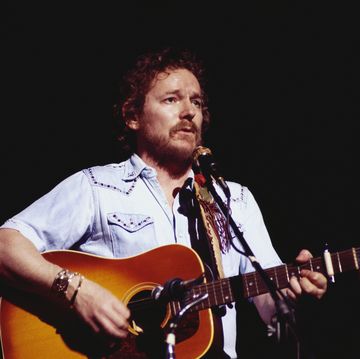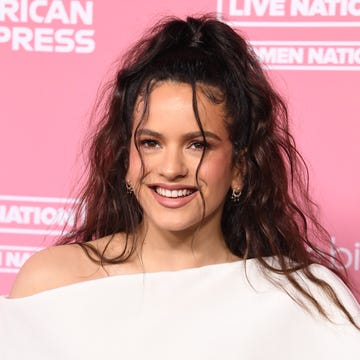(1941-)
Who Is Art Garfunkel?
Art Garfunkel met fellow musician Paul Simon while in school and went on to form a band called Tom and Jerry. Though the duo didn't find much success with the Tom and Jerry moniker, they began to gain a following after changing their name to Simon & Garfunkel and releasing songs that spoke to the generation of the 1960s and '70s, such as "Bridge Over Troubled Water" and "The Sound of Silence."
Early Life, Childhood Friendship with Paul Simon
Singer Arthur "Art" Garfunkel was born in Forest Hills, New York, on November 5, 1941, to Rose and Jack Garfunkel. Sensing his son's enthusiasm for melody, Jack, a traveling salesman, bought Garfunkel a wire recorder. Even as young as four, Garfunkel would sit for hours with the gadget, singing, listening and fine-tuning his voice, and then recording again. "That got me into music more than anything else, singing and being able to record it," he recalls.
At Forest Hills Junior Elementary School Garfunkel was known for belting out songs in empty hallways and performing in plays. In sixth grade, he was in a school production of Alice in Wonderland along with classmate Paul Simon. Simon knew Garfunkel as the singer who was always surrounded by girls. The two lived only blocks from each other in Queens, but it wasn't until Simon heard Garfunkel sing that their fates aligned. Soon, the duo began singing in school talent shows and practicing long hours in basements.
During their high school years, the future Grammy winners performed as Tom Landis and Jerry Graph, fearing that their real names sounded too Jewish and would hamper their success. They performed original music by Simon and pooled their money to make their first professional recording. Their Everly Brothers-influenced track "Hey Schoolgirl" was a minor hit, and secured the duo a recording contract with Big Records in 1957. They became frequent visitors to the Brill Building, offering their services as demo singers to the songwriters who were churning out hits like they were in music factory. Their hit single scored them an appearance on Dick Clark's American Bandstand, going on right after Jerry Lee Lewis. After that, their musical careers quieted down, and they worried that they'd hit their peak at age 16.
Simon & Garfunkel
When high school was over, Simon and Garfunkel decided to go their separate ways and attend college. Garfunkel stayed close to home and attended Columbia University, where he studied art history and joined a fraternity. He later earned a master's degree in mathematics, also at Columbia. Just as he would continue his academic work throughout his career, Garfunkel continued to sing while in college, releasing a handful of solo tracks under the name Artie Garr while becoming ensconced in the growing folk scene. Once again, their parallel talents and interests brought Paul Simon and Art Garfunkel together. In 1962, the former Tom and Jerry reunited as a new, more folk-oriented duo. No longer worried about how anti-Semitism might affect record sales, they used their real names, and became Simon & Garfunkel.
In late 1964, they released the studio album Wednesday Morning, 3 A.M. Nothing much happened with it commercially, and Simon headed off to England, the duo having decided to go their separate ways professionally. Producer Tom Wilson remixed the song "The Sounds of Silence," from that album and released it, and it went to #1 on the Billboard charts. Simon headed back to Queens, where the duo reunited and decided to record and perform more music together. With Simon writing the songs, and Garfunkel providing vocal arrangements and harmonies, they released one hit album after another, each record taking their music and lyrics to a new level. Critical and commercial success came—and increased—with each of their releases: Sounds of Silence (1966), Parsley, Sage, Rosemary and Thyme (1966), and Bookends (1968). Around the time they were working on Bookends, director Mike Nichols asked them to contribute songs to the soundtrack of the 1967 movie The Graduate. As part of the seminal movie that addressed alienation and conformity, the duo furthered their reputation as the voices of a generation. The only original song, "Mrs. Robinson," became a #1 hit, appearing on both The Graduate soundtrack and on the Bookends album.
A year later, Nichols was directing Catch-22, and offered Garfunkel a role. This delayed production on their next album, and started to sow the seeds of their future break-up. They were both moving in new creative directions.
In 1970 they released their biggest hit album yet, Bridge Over Troubled Water. Recorded with innovative — and makeshift — studio techniques, and featuring influences from a wide variety of musical styles, the album was a massive commercial hit and won them six Grammy Awards, including Album of the Year, Song of the Year and Record of the Year for its title track.
It was their last studio album. Initially, they planned to get back together after a break, but once they’d been apart for a while, continuing their creative pursuits separately seemed to make more sense. Simon & Garfunkel were no more.
Two years after their break-up, Simon & Garfunkel's Greatest Hits was released and stayed on the American charts for 131 weeks. That same year, they appeared together at a benefit for Presidential hopeful George McGovern.
Solo Career: 'All I Know,' 'I Only Have Eyes For You' & More
Simon and Garfunkel parted ways in 1970, but they remained tied to each other personally and professionally. On-again-off-again friends and collaborators, they reunited several times in their careers only to discover they couldn't work together after all, certainly not beyond short-term projects. For years, Garfunkel remembered their time together warmly (although that would change). "I'll always be happy to say a little on behalf of the duo. I'm proud of singing those great songs. Now they teach Paul Simon songs in churches and schools as part of the curricula... it seems that part of good citizenship is the knowledge of the songs we did. How can I grasp that?" (Decades later, feeling slightly less warm about their relationship, he would give a vitriolic interview to The Telegraph, describing Simon as an insecure narcissist.)
In the meantime, he gave his full attention to his own solo career. His first album, Angel Clare (1973), featured the hit "All I Know," written by Jimmy Webb, produced by longtime Simon & Garfunkel producer Roy Halee. (The song got a new life in 2005 when it was covered by Five For Fighting on the Chicken Little soundtrack.)
His next album, Breakway (1975) gave him another hit, a cover of the classic "I Only Have Eyes For You." The album featured guests like David Crosby, Graham Nash, and Stephen Bishop, as well as the first new track from Simon and Garfunkel in five years, "My Little Town," which also appeared on Simon's solo album Still Crazy After All These Years.
With his next album, Watermark (1977), Garfunkel focused on collaborating with one songwriter. Jimmy Webb wrote all of the songs with one exception: a cover of the Sam Cooke hit "What a Wonderful World," sung by Garfunkel, Simon, and James Taylor, which went to #17 on the charts.
Garfunkel scored another hit off of Watermark, with help from the song "Bright Eyes," which became the sad, beautiful theme song to the movie adaptation of Richard Adams' Watership Down. It topped the charts in the U.K.
His 1981 album Scissors Cut was a critical success but a commercial flop. A year later, Simon & Garfunkel played a concert in Central Park together, breaking all existing records by pulling in an audience of 500,000 people. After that they went on a world tour, and released a double album and an HBO special of their Central Park show. But the reunion was not to last. They scrapped plans for an album of new material together, and Simon kept the songs for his own solo album.
Back on his own again, Garfunkel peppered his music career with forays into acting. He had already done several movies with director Mike Nichols, including Carnal Knowledge (1971), and he guest starred on TV shows as well, including an episode of Laverne & Shirley. In 1998, he appeared on the children’s TV show Arthur as a singing moose.
Later Career: Solo Projects and Reuniting with Paul Simon
Garfunkel continued to perform on stage and record new material. In 1990, he performed in front of 1.4 million people at the request of the U.S. State Department, at a rally to promote democracy in Sofia, Bulgaria. That year, Simon & Garfunkel were also inducted into the Rock & Roll Hall of Fame.
Three years later, he released the album Up 'Til Now, which included his duet with James Taylor on “Crying in the Rain,” along with the theme song for the show Brooklyn Bridge, and “Two Sleepy People” from the hit movie A League of Their Own. That October, he and Simon played 21 sold-out shows at the Paramount Theater in New York City. In 1997, he recorded an album for children inspired by his son James, covering songs by Cat Stevens, Marvin Gaye and John Lennon-Paul McCartney, among others. Then, in 1998, he made his songwriting debut on his album Everything Wants to Be Noticed.
In 2003, he was on stage with Simon again, accepting a Grammy Lifetime Achievement Award and playing “Sounds of Silence” on the live show. They toured again after that, and in 2005, performed “Bridge Over Troubled Water,” “Homeward Bound,” and “Mrs. Robinson” at a benefit for victims of Hurricane Katrina at Madison Square Garden.
Speaking of an artistic high he felt during one of their reunion concerts, Garfunkel said, "I knew we did something right in the 60s, but I didn't know how right."
In 2007, he re-teamed with producer Richard Perry (Breakaway) on the album Some Enchanted Evening, recording standards he had loved his entire life.
In 2010, he started to experience problems with his vocal chords, which became apparent when he was performing with Simon at the New Orleans Jazz and Heritage Festival. It was a struggle to sing anything at all. He had “paresis” of his vocal chords, and started to lose his middle range. It took about four years for him to recover, and he told Rolling Stone magazine in 2014 that he was back to 96% capability, and still getting stronger. He also spoke candidly about his relationship with Simon, “We are indescribable. You’ll never capture it. It’s an ingrown, deep friendship. Yes, there is deep love in there. But there’s also shit.”
In 2016, the Simon & Garfunkel song “America” was used — with their permission — by Bernie Sanders in his unsuccessful campaign to secure the Democratic nomination for President. “I like Bernie,” Garfunkel told the New York Times. “I like his fight. I like his dignity and his stance. I like this song.”
Today, Garfunkel continues to record and perform solo projects, while also teaming up with famous artists such as James Taylor and Bruce Springsteen. He also continues to appear in movies. In the 1980s, long-distance walking became one of his passions; he crossed both Japan and the United States on foot. During his walks, he started writing poetry, and published a collection in 1989 called Still Water. In 2017, he added another published work with an autobiography, What Is It All But Luminous: Notes from an Underground Man, a eccentric mix of poetry, lists, travel and musings about his wife.
Garfunkel has continued his passion for long distance walking for several decades. Having now walked across a significant portion of the world, he still considers his life experiences to be less about what he has achieved, and more about what he has been blessed with, saying, "I feel somewhat different from many people in the extraordinary amount of good fortune that fell into my lap and made up my life."
Personal Life and Wife
While the 1970s proved to be full of success, the 1980s were a challenge for Garfunkel both professionally and personally. After a brief marriage to Linda Grossman in the early 1970s, Garfunkel dated actress Laurie Bird for five years. In 1979, she committed suicide, leaving Garfunkel heartbroken. He credits his brief but happy relationship with Penny Marshall for helping him recover from his loss, and channeled his depression into his 1981 album Scissors Cut, which was dedicated to Bird. In 1985, he met model Kim Cermack on the set of the movie Good To Go. The couple married three years later, and have two sons.
QUICK FACTS
- Name: Art Garfunkel
- Birth Year: 1941
- Birth date: November 5, 1941
- Birth State: New York
- Birth City: Forest Hills
- Birth Country: United States
- Gender: Male
- Best Known For: Art Garfunkel is a singer and actor who rose to fame as half of the 1960s folk-rock duo Simon & Garfunkel.
- Industries
- Rock
- Pop
- Astrological Sign: Scorpio
Fact Check
We strive for accuracy and fairness.If you see something that doesn't look right,contact us!
CITATION INFORMATION
- Article Title: Art Garfunkel Biography
- Author: Biography.com Editors
- Website Name: The Biography.com website
- Url: https://www.biography.com/musicians/art-garfunkel
- Access Date:
- Publisher: A&E; Television Networks
- Last Updated: July 21, 2020
- Original Published Date: April 2, 2014



